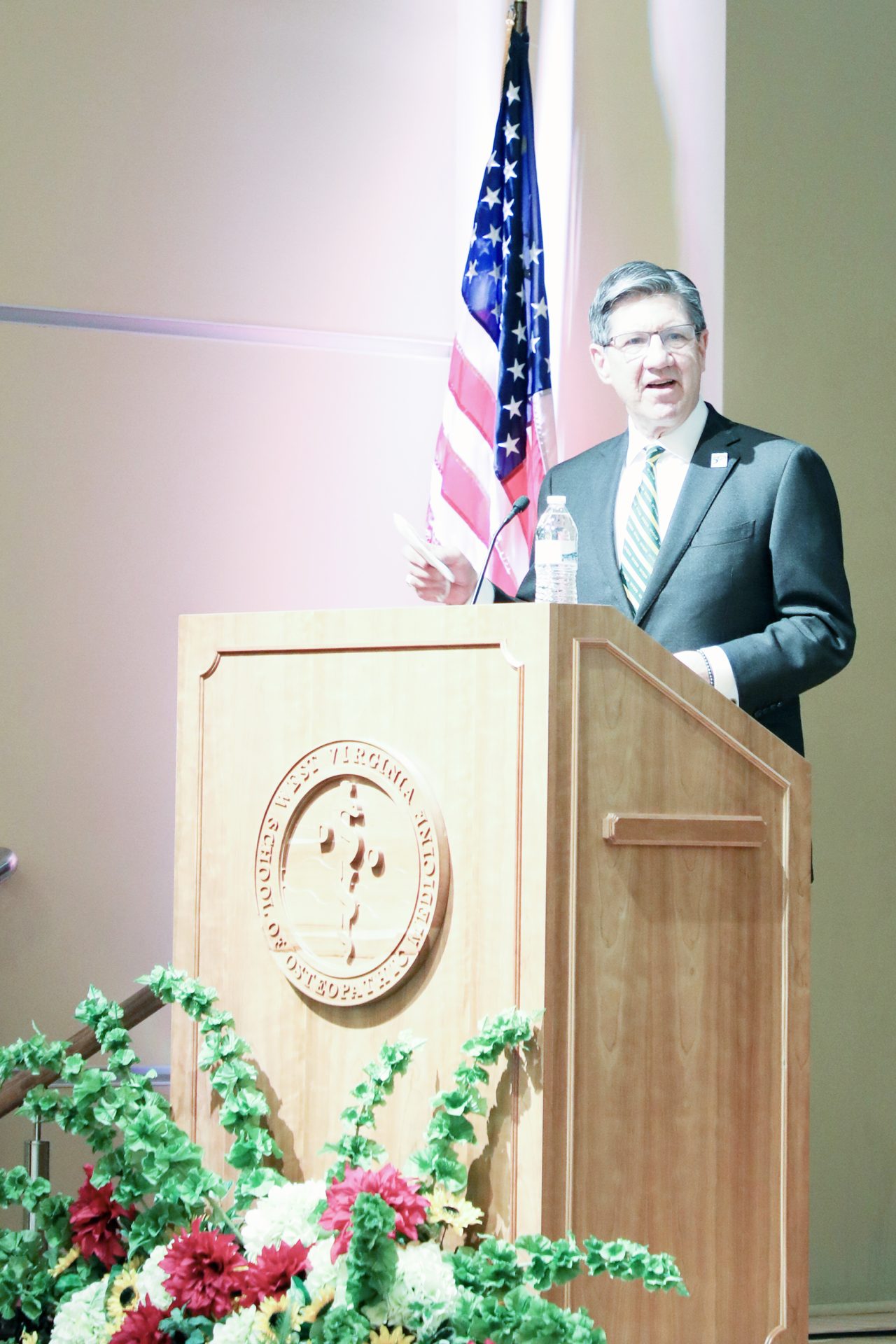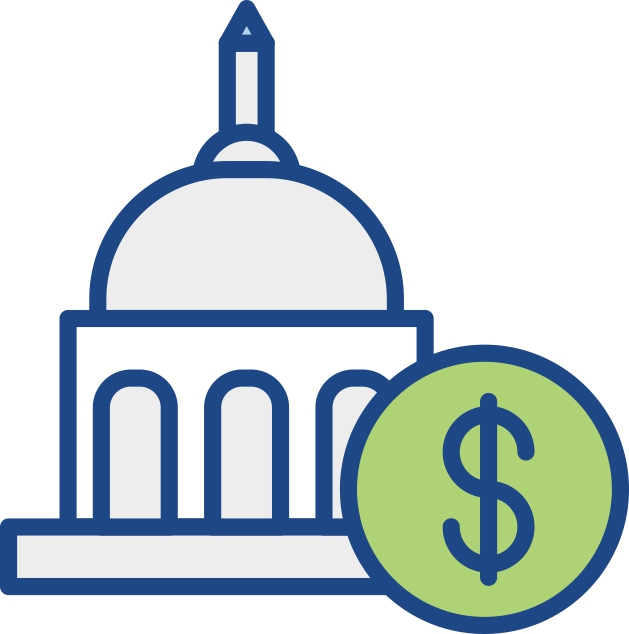
In a State of the School address, James W. Nemitz, Ph.D., president of the West Virginia School of Osteopathic Medicine (WVSOM), praised the school’s status as a leader in medical education, said the expansion of WVSOM’s research enterprise is an essential component of continued success, and noted the school’s financial security while also cautioning about challenges ahead.
In a Mar. 9 presentation, Nemitz shared information about the medical school’s 2021-22 academic and fiscal year. He said WVSOM is the leading contributor to the total number of physicians in the state, and also leads in producing rural and primary care physicians for West Virginia.
“In terms of meeting our mission, the bottom line is retention of grads in West Virginia,” he said. “I’m proud that our footprint is found all through the state, in 52 of our 55 counties, and that we’ve also populated every single state in the U.S. with WVSOM alums.”
Nemitz pointed out that the school’s graduates also enter specialties that fall outside the primary care umbrella.
“It’s not only WVSOM’s primary care physicians who are retained in our state, it’s surgeons, anesthesiologists, dermatologists. The reality is that WVSOM produces graduates in all specialties who address the health care needs of West Virginia,” he said.
As scholarly activity becomes increasingly important to students’ chances of matching to a residency program of their choice, Nemitz said WVSOM must make research a top priority and has requested funds from the federal and state governments to help the school expand its research enterprise.
“In the history of the school, I don’t think we’ve ever done better in the production of publications, studies and grants in terms of our research enterprise,” he said. “But there is a real need to add to our existing research facility. One of the filters to get into residencies in certain specialties is, ‘Have you conducted research?’So it’s important for our reputation as a medical school, and it’s becoming essential for our students.”
Nemitz said changes in workers’ priorities following the COVID-19 pandemic mean that many employers are finding it difficult to recruit and retain personnel, and that WVSOM has implemented several initiatives as a result, including wellness activities, work-schedule flexibility and telework options. The school currently has just under 300 employees.
He praised the work of WVSOM’s Office of Admissions in finding innovative ways to reach potential students and said the school’s enrollment remains strong, even in the face of competition from new osteopathic medical programs at other schools as well as from existing programs that offer M.D. degrees.
“We host open houses, but we’re looking at other ways to attract quality applicants, and specifically quality West Virginia applicants. We have a tuition-discounting initiative for West Virginia students, we are growing our pipeline programs and we’re doing more social media to grab the attention of students,” he said.
Nemitz emphasized that the school’s financial composite index is strong and that its economic future is secure.
“We are very financially sound,” Nemitz said. “The West Virginia Higher Education Policy Commission has acknowledged that we’re the strongest institution in the state, and we’re one of the strongest in the country.”
Other developments include WVSOM’s recent seven-year accreditation by the Commission on Osteopathic College Accreditation, an upcoming collaboration with the University of Charleston that will allow students to pursue a dual D.O./MBA degree, and improvements to student wellness such as removing elements from the curriculum that are redundant or no longer needed, and the incorporation of “golden weekends” when students have down time.
Nemitz’s presentation also highlighted WVSOM’s economic impact on West Virginia and the nation.
“We’re delivering more than $133 million to the state in direct contributions. When you add the contributions of our alumni who practice in the state, the health care delivery hours that they’re generating and that our students are generating, we hit more than $1.5 billion. And nationwide, it’s $9 billion. The school has an incredible economic impact not only on the state, but throughout the country.”



